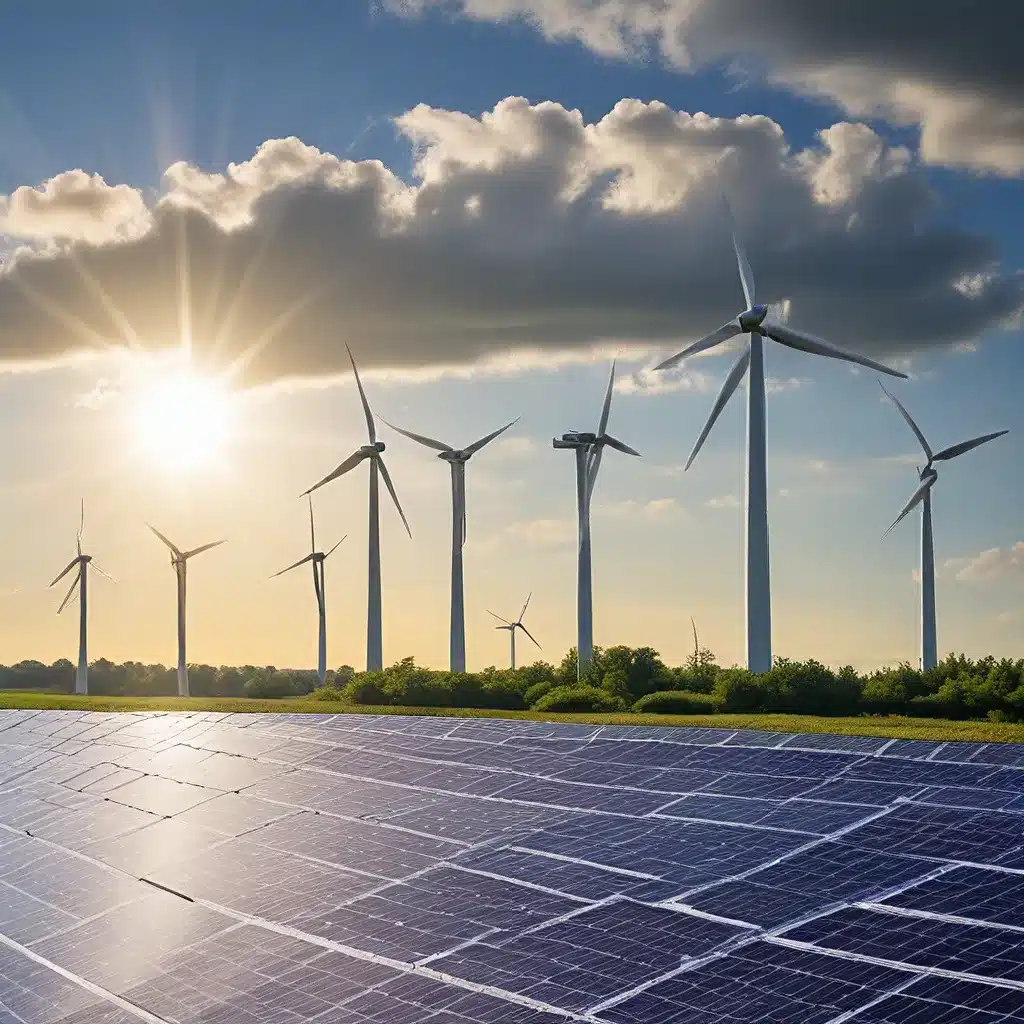
The Power of Partnership
When it comes to tackling the global climate crisis, I believe the dynamic duo of renewable energy and energy efficiency holds the key to unlocking a sustainable future. As the world grapples with the staggering reality that our atmosphere now contains 407 parts per million of carbon dioxide – a level not seen in over 650,000 years – it’s clear that rethinking our energy sector is crucial.
Fortunately, the solutions are within our grasp. According to the International Renewable Energy Agency (IRENA), renewable energy and energy efficiency can together provide over 90% of the mitigation needed in the energy system by 2050 to put the world on a pathway to fulfilling the Paris Agreement. That’s a staggering statistic that should give us all hope.
The Synergistic Relationship
What makes this renewable energy-energy efficiency partnership so powerful? The synergies between the two are truly remarkable. When pursued together, they can bring about faster reductions in energy intensity and lower energy costs, according to IRENA’s research. The reason for this is simple: improved energy efficiency reduces overall energy demand, allowing the share of renewable energy in the mix to grow faster.
It’s a virtuous cycle – the more efficient we become, the more renewable energy we can deploy. And the benefits don’t stop there. Reduced air pollution, a significant killer, is another real-world outcome of this synergistic relationship. In fact, a recent study showed that the deployment of more solar and wind energy in the United States has saved almost 13,000 lives.
Unlocking the Potential
So, how can we unlock the full potential of this dynamic duo? IRENA’s research focuses on the opportunities for the world’s five largest energy users – China, Germany, India, Japan, and the United States – to boost their renewable and energy efficiency efforts.
The key, says IRENA’s Director of Innovation and Technology Centre, Dolf Gielen, is to take a “system-wide perspective” that considers the interconnections between technologies and sectors. For example, the electrification of services like passenger transport and heating can result in higher efficiency, allowing for greater use of renewable power.
On the supply side, the switch to renewable power tends to reduce primary energy demand, as power generation from many types of renewables is 100% efficient, while fossil power plants only achieve 25-85% efficiency.
Overcoming Challenges
Of course, the path to this sustainable future is not without its challenges. The cost-competitiveness of technologies varies by country, and a truly seamless integration of renewable energy and energy efficiency will require a deeper understanding of the potential at the country, sector, and technology levels.
But I believe these challenges are not insurmountable. As Gielen points out, “All countries can benefit from the important synergies between renewable energy and energy efficiency.” With the right policies and a system-wide approach, we can unlock the full potential of this dynamic duo.
The Future is Bright
As I look to the future, I’m filled with optimism. According to IRENA’s research, global energy-related CO2 emissions could be reduced by 70% by 2050, with renewable energy accounting for about half of those reductions and another 45% coming from increased energy efficiency and electrification.
It’s a future that is within our reach, but it will require us to think differently and work collaboratively. By harnessing the synergies between renewable energy and energy efficiency, we can create a more sustainable, resilient, and equitable energy system – one that not only mitigates the effects of climate change but also delivers real environmental and social benefits.
So, let’s embrace this dynamic duo and work together to build the clean energy future we all deserve. The possibilities are endless, and the time to act is now.

